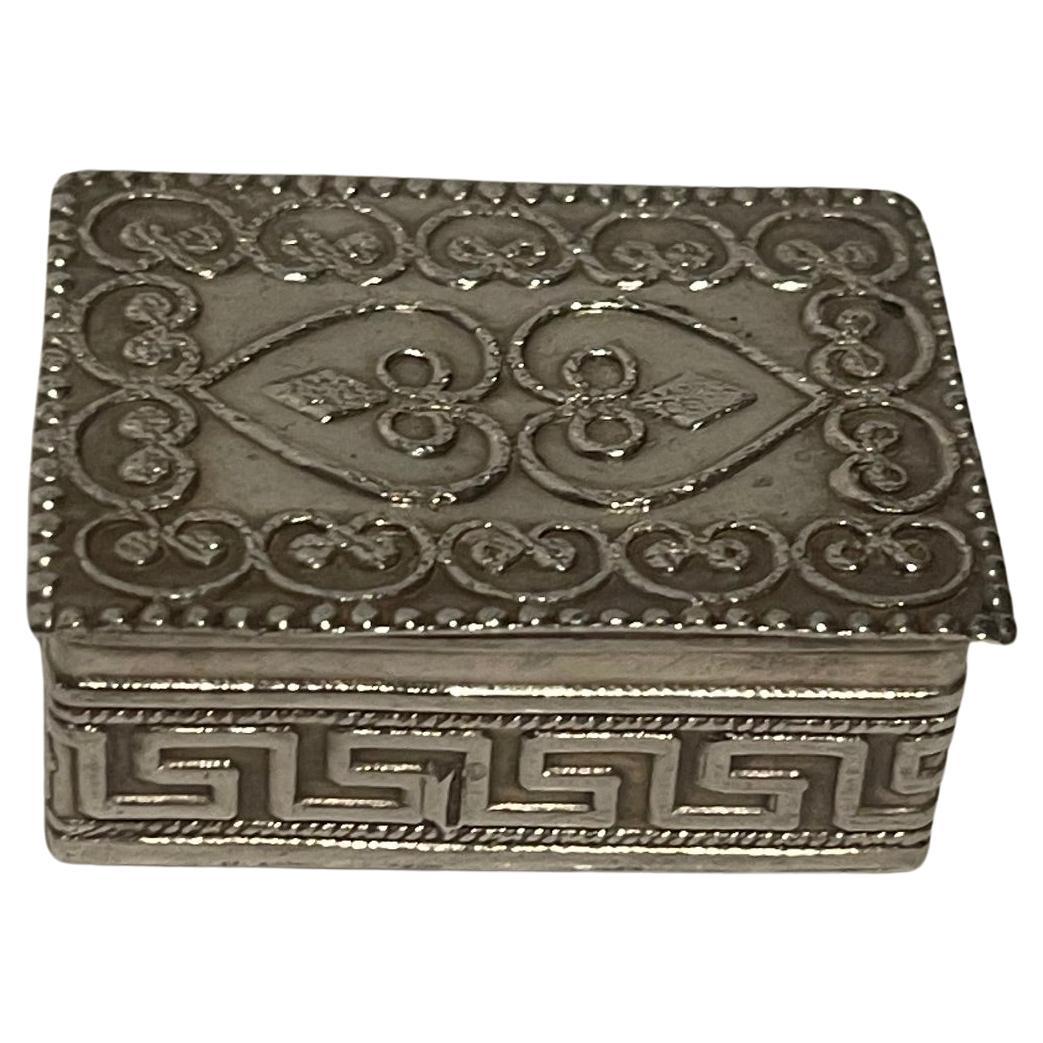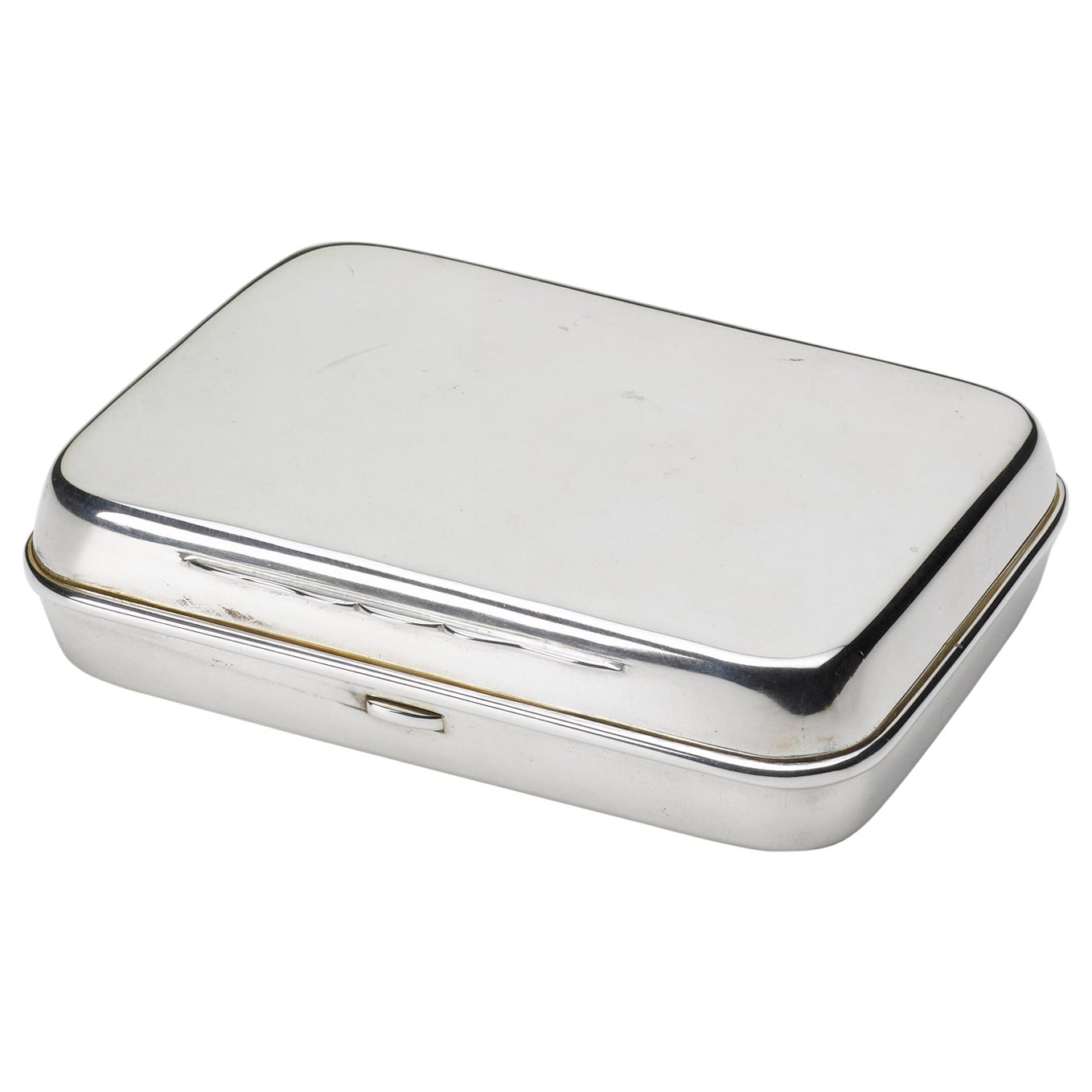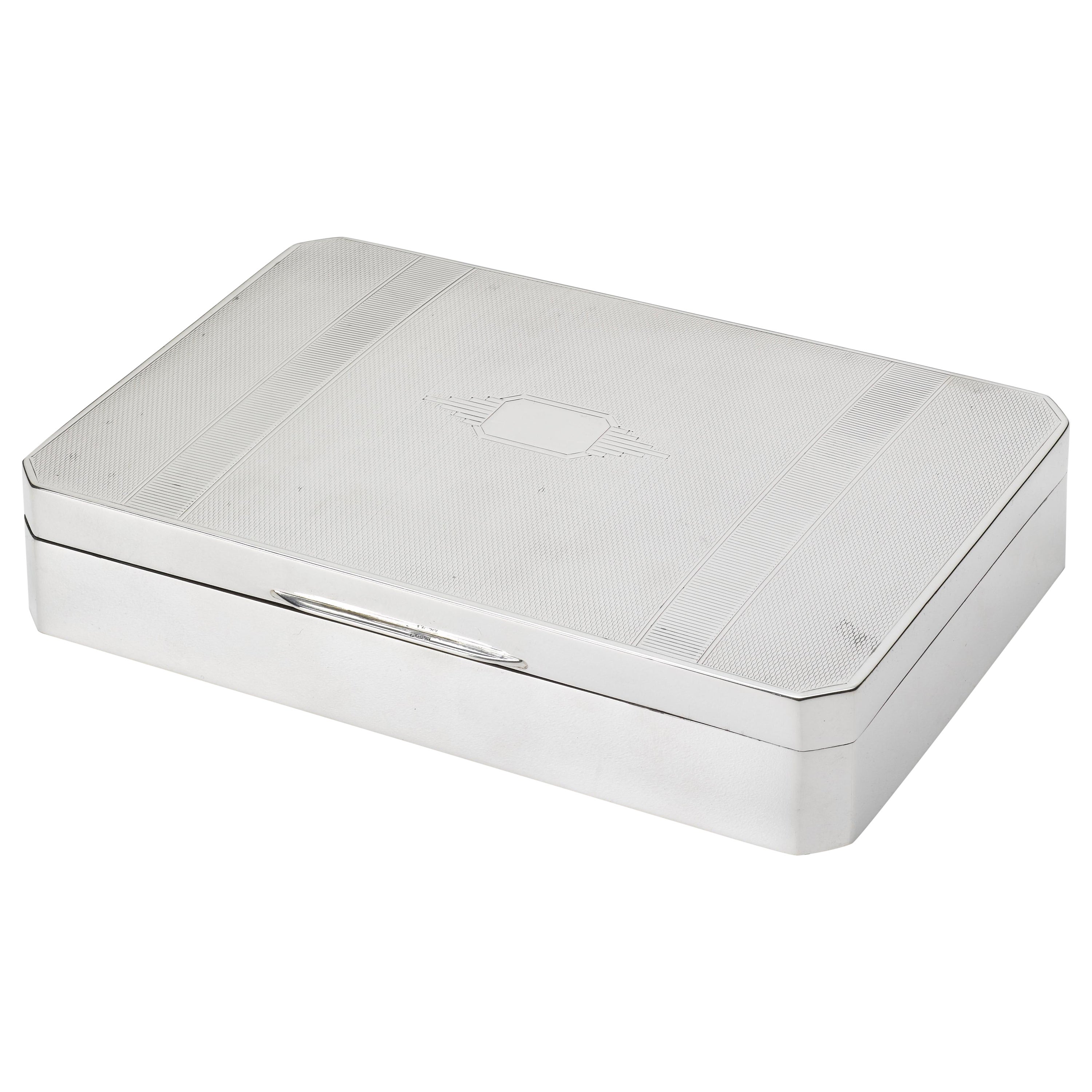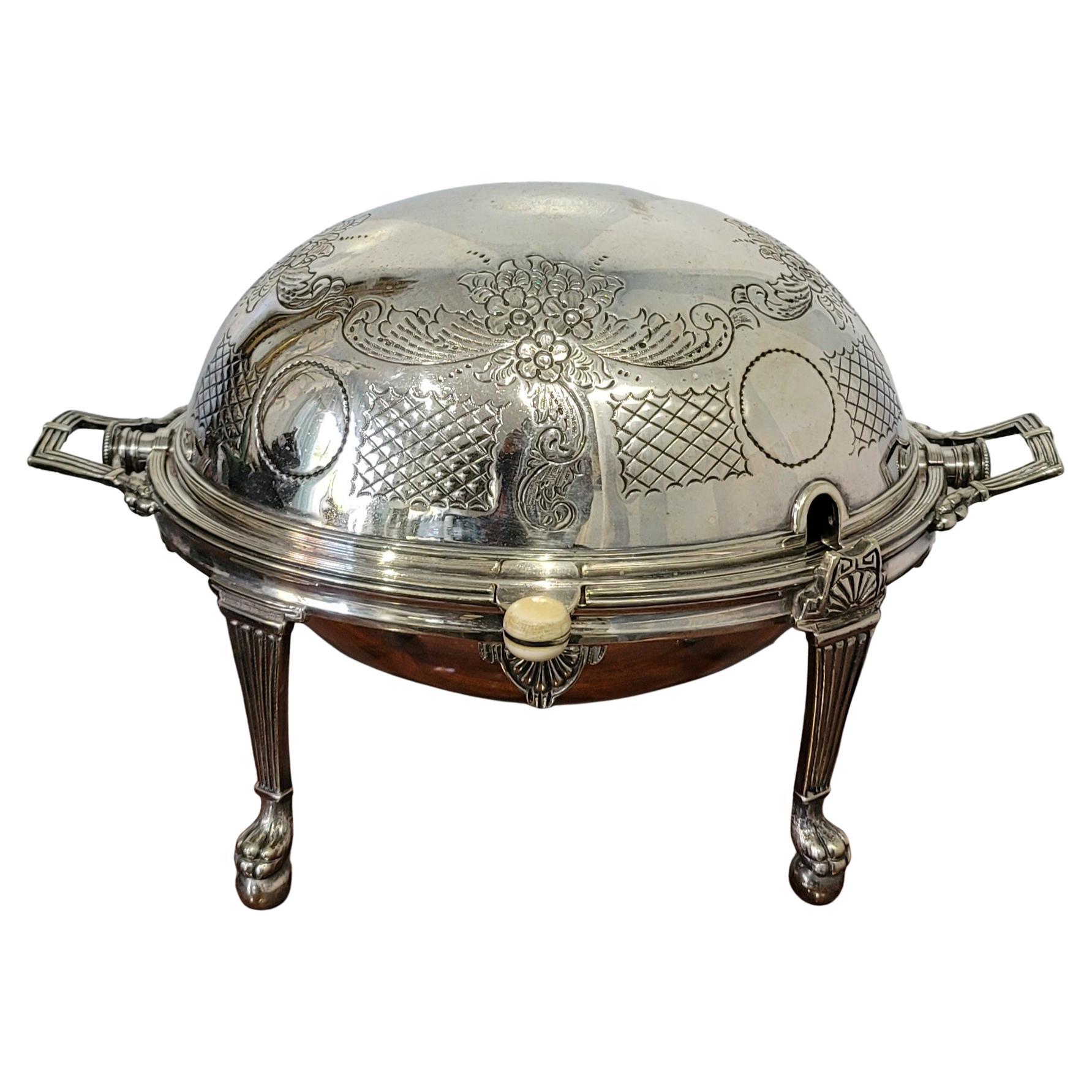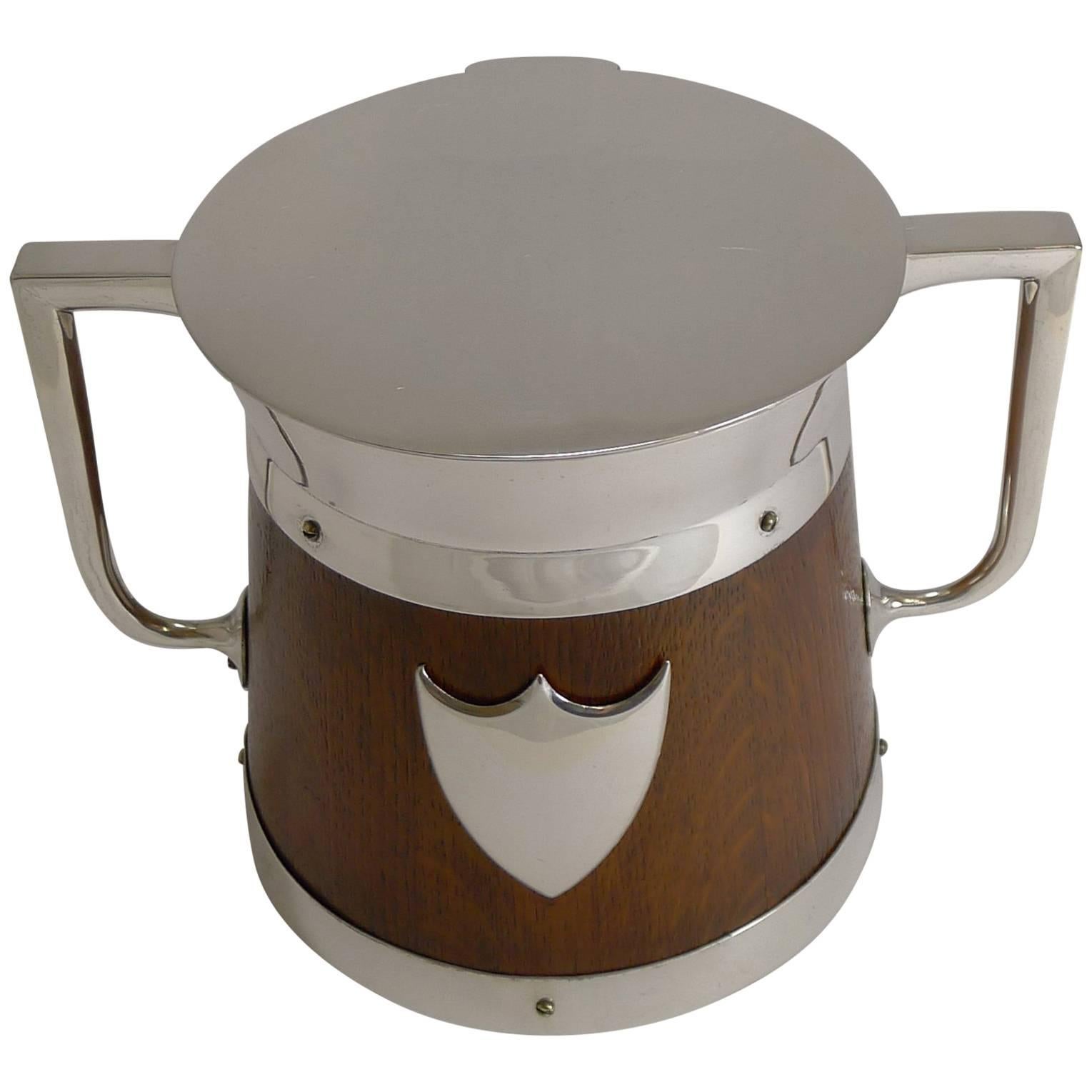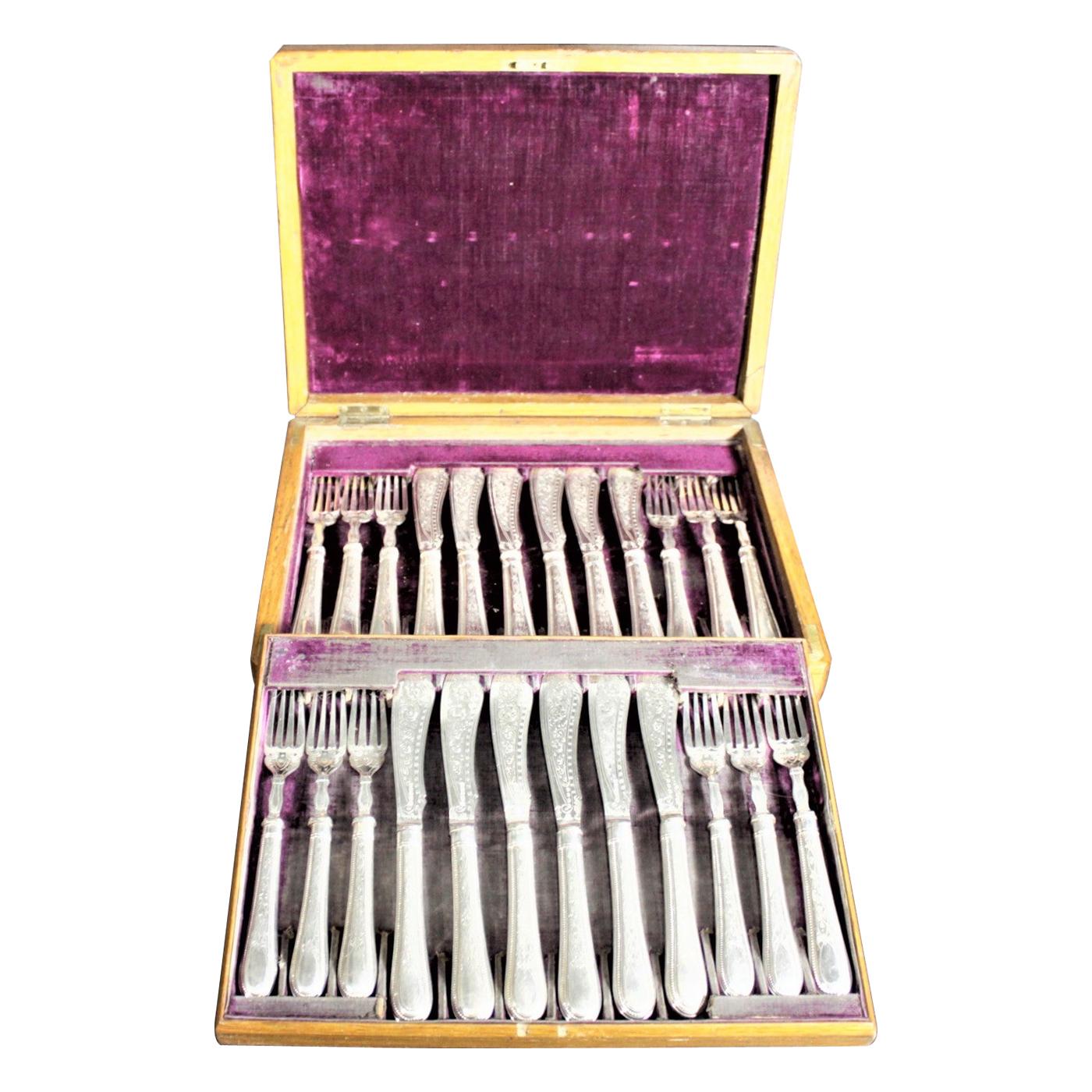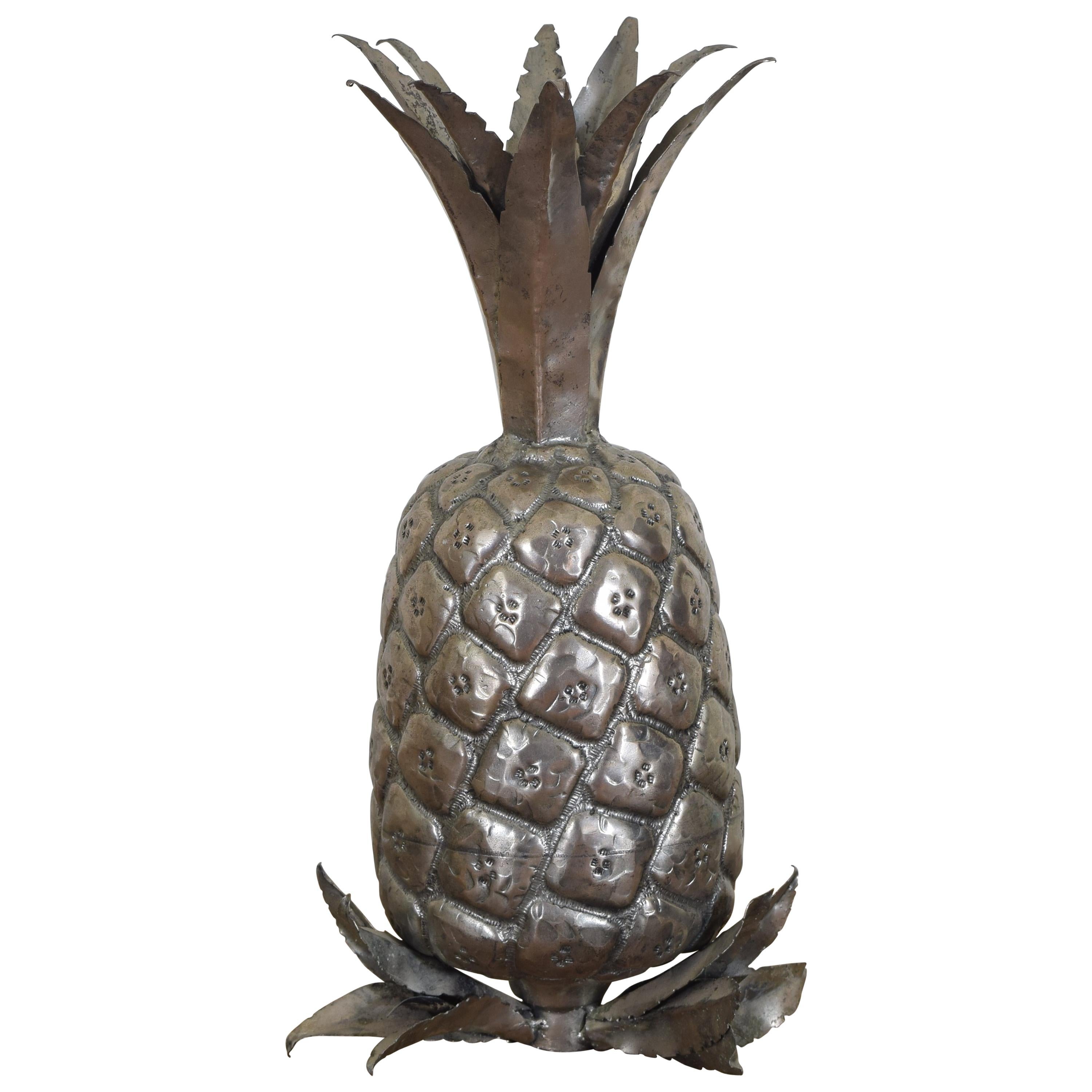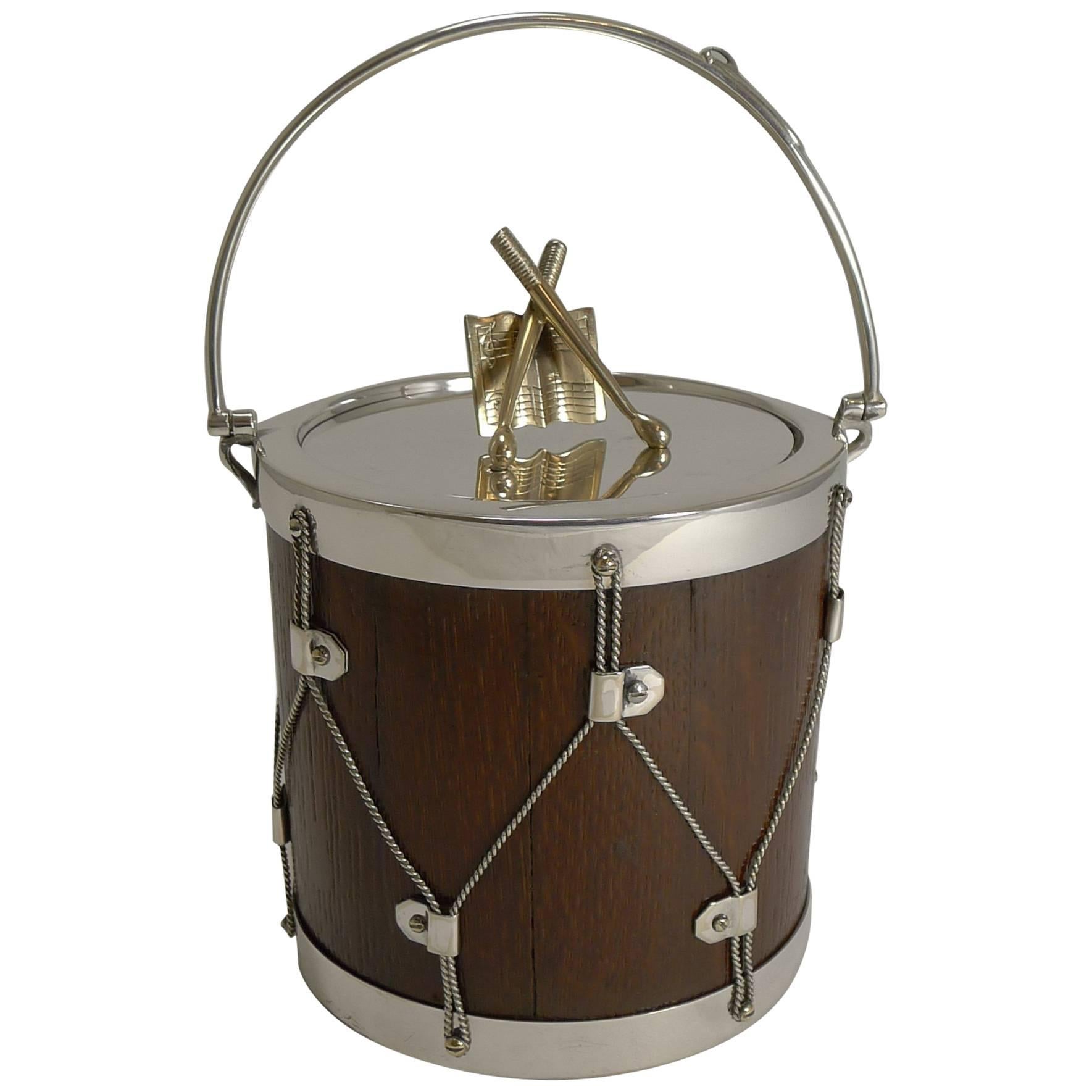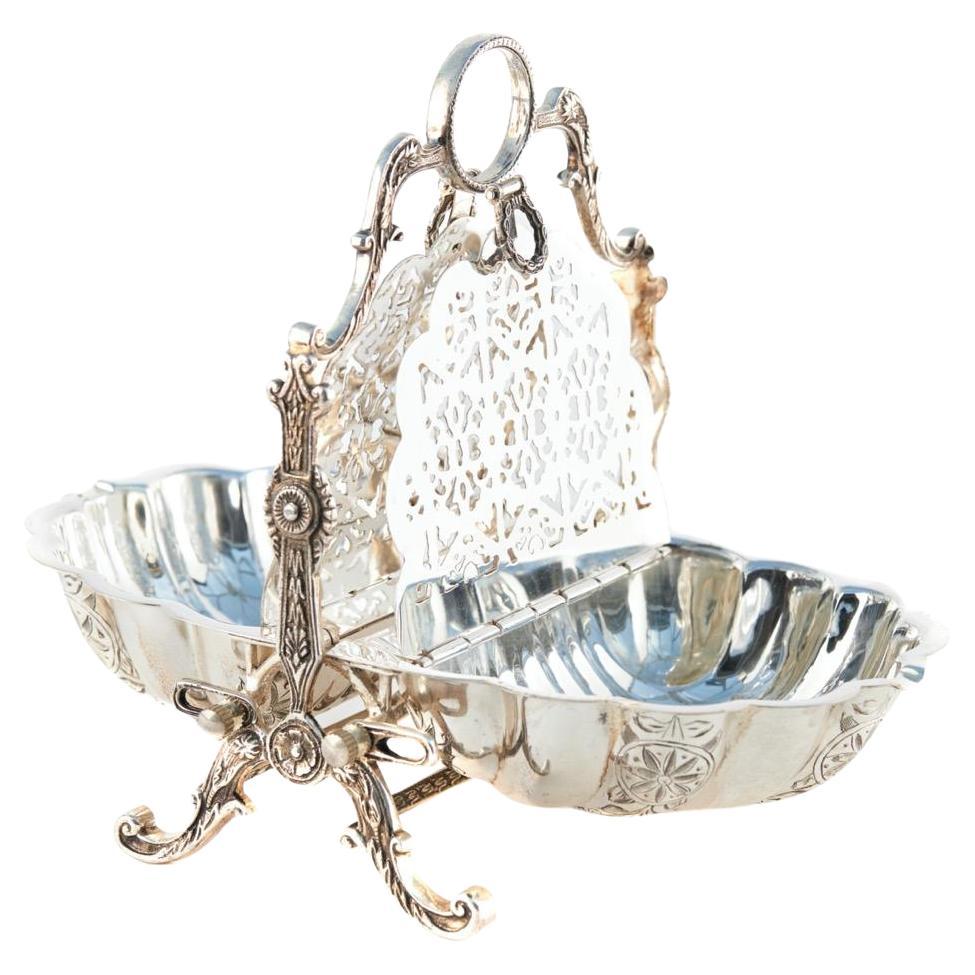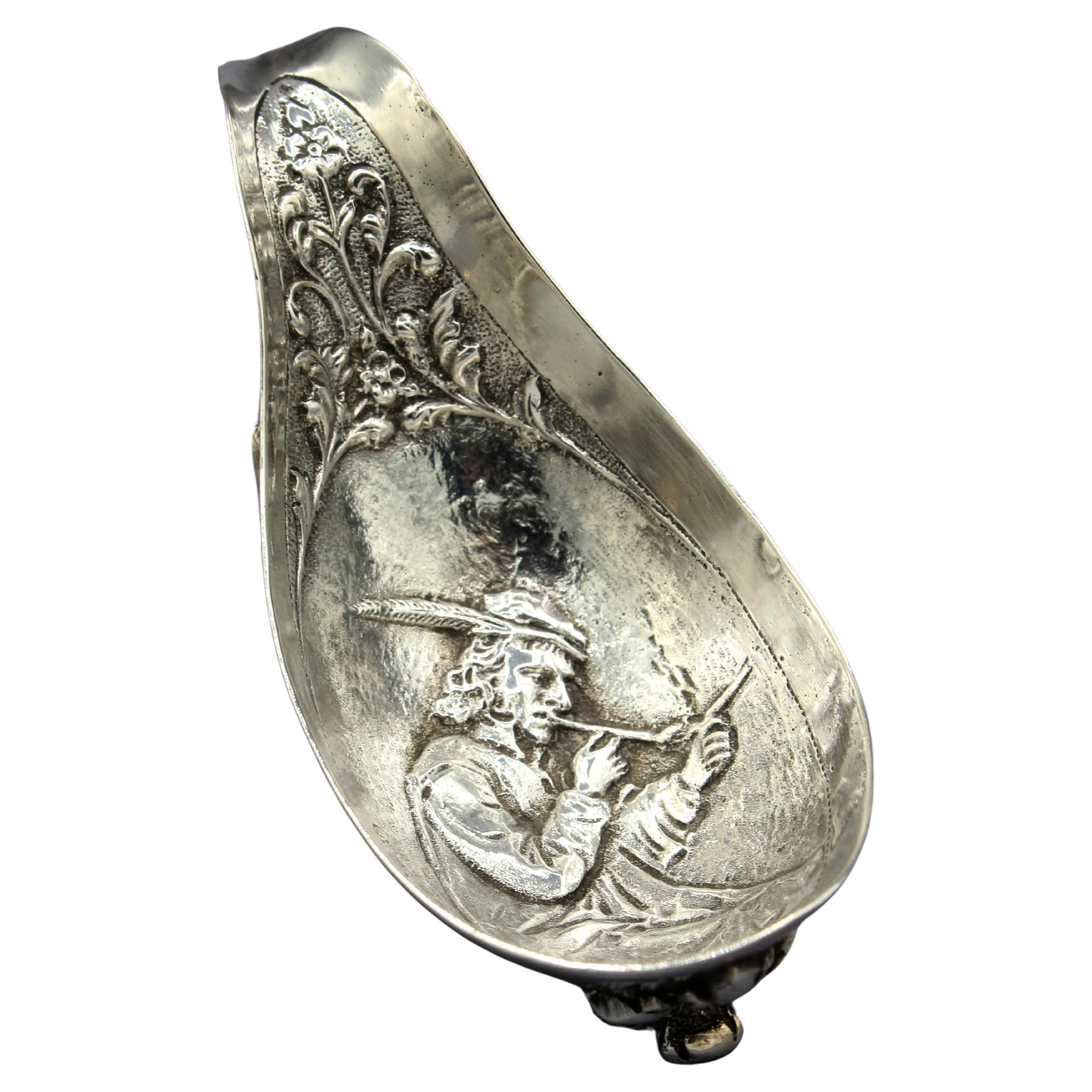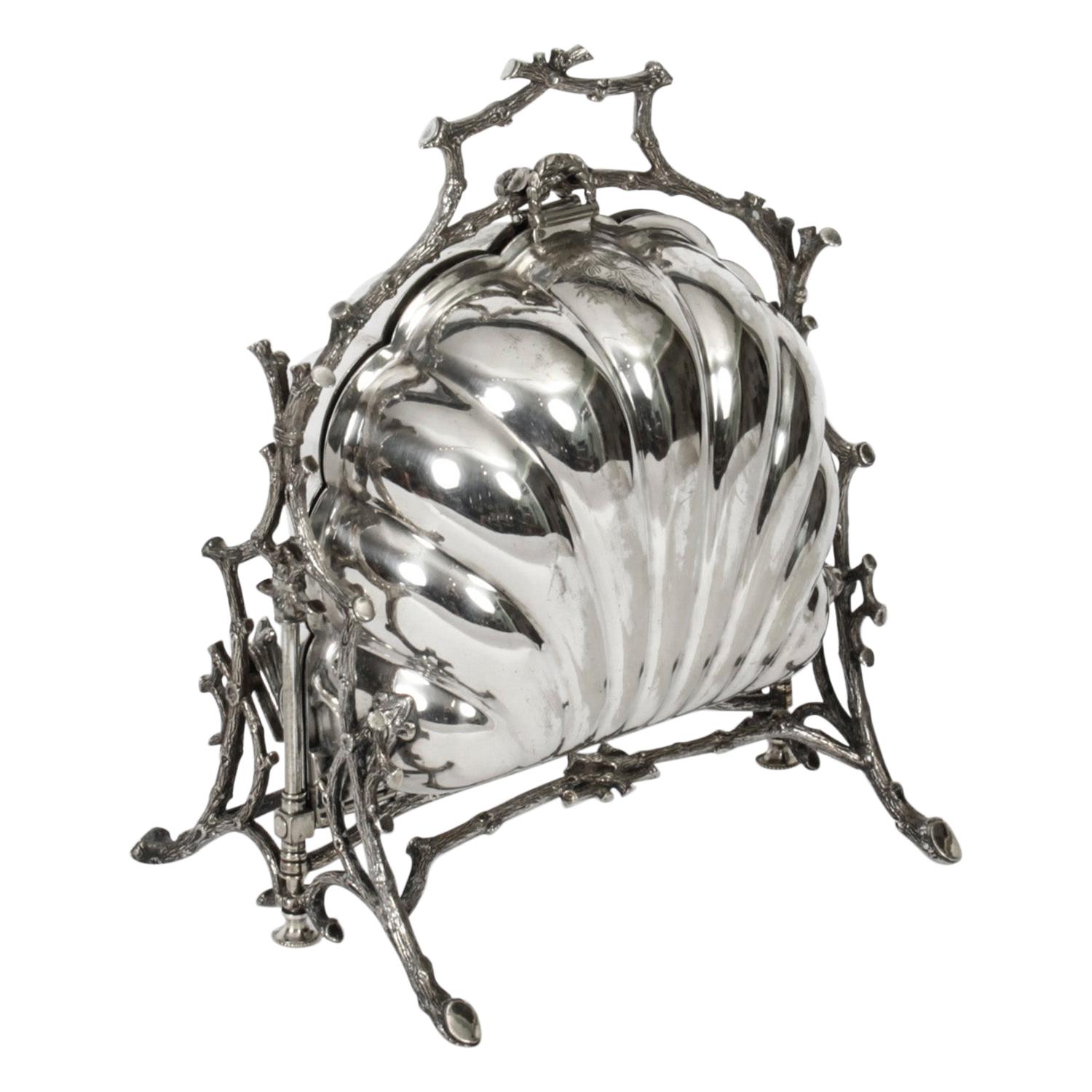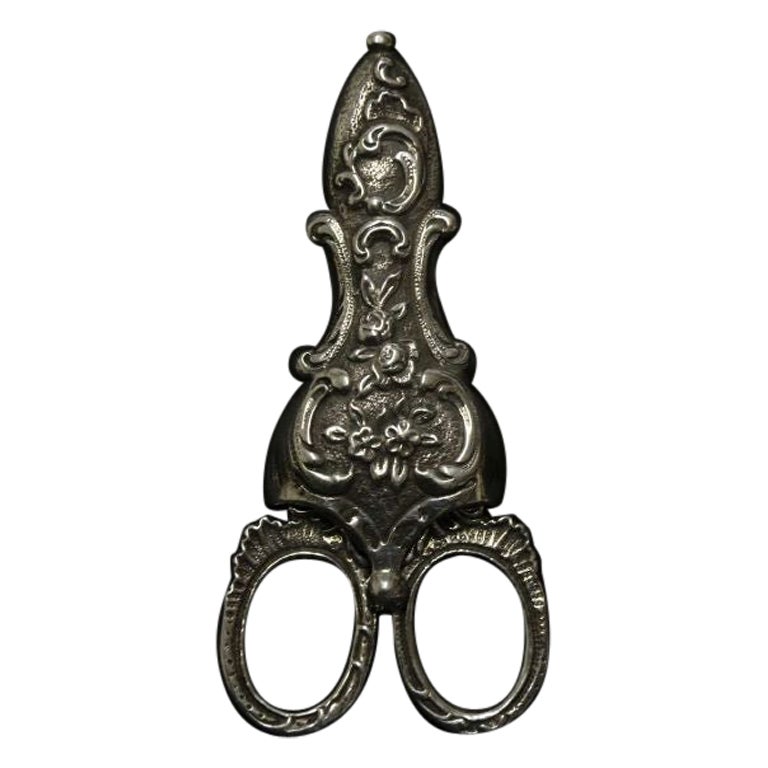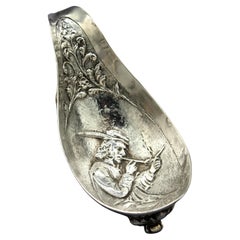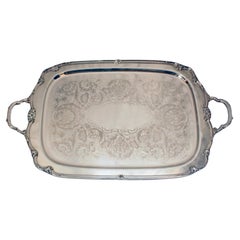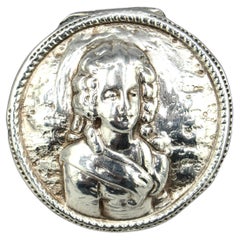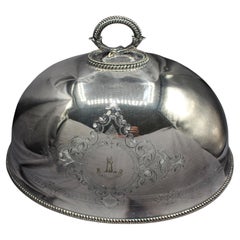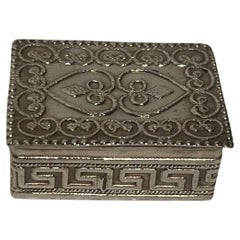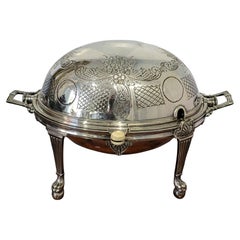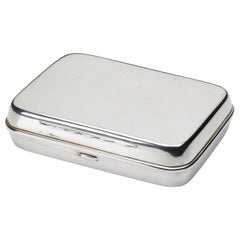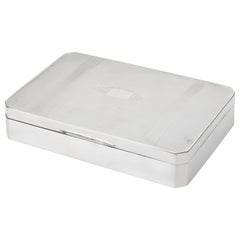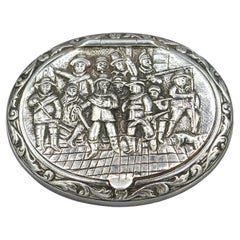
Continental Silver Oval Pill Box, Netherlands, c.1900
View Similar Items
Want more images or videos?
Request additional images or videos from the seller
1 of 7
Continental Silver Oval Pill Box, Netherlands, c.1900
$120List Price
About the Item
- Dimensions:Height: 0.38 in (9.66 mm)Width: 1.75 in (4.45 cm)Depth: 2.13 in (5.42 cm)
- Style:Late Victorian (Of the Period)
- Materials and Techniques:
- Place of Origin:Netherlands
- Period:1900-1909
- Date of Manufacture:1900
- Condition:Wear consistent with age and use. Condition commensurate with age and use.
- Seller Location:Chapel Hill, NC
- Reference Number:Seller: WSI-9476z1stDibs: LU6458236678732
About the Seller
4.9
Platinum Seller
Premium sellers with a 4.7+ rating and 24-hour response times
Established in 1930
1stDibs seller since 2022
331 sales on 1stDibs
Typical response time: 1 hour
Authenticity Guarantee
In the unlikely event there’s an issue with an item’s authenticity, contact us within 1 year for a full refund. DetailsMoney-Back Guarantee
If your item is not as described, is damaged in transit, or does not arrive, contact us within 7 days for a full refund. Details24-Hour Cancellation
You have a 24-hour grace period in which to reconsider your purchase, with no questions asked.Vetted Professional Sellers
Our world-class sellers must adhere to strict standards for service and quality, maintaining the integrity of our listings.Price-Match Guarantee
If you find that a seller listed the same item for a lower price elsewhere, we’ll match it.Trusted Global Delivery
Our best-in-class carrier network provides specialized shipping options worldwide, including custom delivery.More From This Seller
View AllContinental Late 19th Century 800 Silver Pipe Rest
Located in Chapel Hill, NC
Continental late 19th century 800 silver pipe rest. Displaying repousse design of a man in Renaissance garb with his pipe, trailing flowers & cast scroll feet. 0.90 troy oz. 28 grams...
Category
Antique Late 19th Century English Renaissance Revival Sheffield and Silv...
Materials
Silver
$120 Sale Price
20% Off
"Remembrance" Heavy Silver on Copper Tea Tray
By International Silver
Located in Chapel Hill, NC
A fine, heavy silver on copper tea tray; graceful borders enhanced by floral sprays & florets. Inner bead border. Good vintage condition with no bleeding ...
Category
Early 20th Century American Victorian Sheffield and Silverplate
Materials
Silver, Copper
$175 Sale Price
40% Off
Continental Sterling Silver "Patch Box", Late 19th Century
Located in Chapel Hill, NC
Continental sterling silver "Patch Box", late 19th century. Foreign import marks. Sterling standard 925 mark. Vermeil interior. The 18th century female head is charming & appropriate...
Category
Antique Late 19th Century European Late Victorian Sterling Silver
Materials
Sterling Silver
$116 Sale Price
20% Off
Mid-19th Century English Silver on Nickle Meat Cover by Thomas Bradbury & Sons
By Thomas Bradbury & Sons Ltd.
Located in Chapel Hill, NC
Mid-19th century English silver on nickle meat cover by Thomas Bradbury & Sons. TS & S Crown mark & Reg. Mark of Nov 24, 1859. Given the mark, almost certainly made in 1859. Exceptio...
Category
Antique Mid-19th Century English Victorian Sheffield and Silverplate
Materials
Silver Plate, Nickel
Monogram Gorham Silver Plated Tea Tray
By Gorham
Located in Chapel Hill, NC
A superb quality Gorham silver plated on copper oval tea tray encrusted in cast vintage motifs. Monogram "EBR". Medallion maker's insignia: "Plate...
Category
Early 20th Century American Aesthetic Movement Sheffield and Silverplate
Materials
Silver Plate, Copper
$360 Sale Price
40% Off
Circa 1940 Silver Plated Tea Tray by Sheffield Silver Co.
By Sheffield Silver Co.
Located in Chapel Hill, NC
Circa 1940 silver plated tea tray by the Sheffield Silver Co., Brooklyn, NY. Elegant, cartouche form with reeded edge & integral button feet & ...
Category
Vintage 1940s American Art Deco Sheffield and Silverplate
Materials
Silver Plate
$360 Sale Price
20% Off
You May Also Like
Sterling Silver Pill Box with Detailed Motif
Located in Savannah, GA
Sterling silver pill box. Marked 925
Category
Early 20th Century Sheffield and Silverplate
Materials
Sterling Silver
1890s Drew & Sons Revolving Electroplate Silver Oval Serving Dish
Located in Germantown, MD
Keep your food warm when serving your guests. This lovely serving dish and warmer has a very ornate cover that rolls back.. It was made by Drew & Sons, England. The warmer is dated to the later part of the 19th Century. It is made in electroplated silver...
Category
Antique Late 19th Century English Late Victorian Sheffield and Silverplate
Materials
Silver Plate
Hallmarked Silver Plated Keepsake Box, Sheffield, Uk, Circa 1900
Located in Colorado Springs, CO
Offered is a stunning Sheffield silver keepsake box dating to 1900, with associated hallmark. This small box includes a clean interior and rounded corners. The box is free of names or initials, but would have been used to house keepsakes such as jewelry or cufflinks. A well maintained, elegant piece, this antique silver box is an excellent addition to any silver collection.
Trinket or keepsake boxes have taken on many forms since their first conception in ancient times. However their purpose remains the same; to store jewelry and other items precious to the owner. Originally, these boxes were used specifically for jewelry. These were in common use as early as 5000 BC in Ancient Egypt, when the majority of Egyptians, both male and female, wore jewelry. Boxes were used to keep these gemstone encrusted items safe. In Ancient Rome, jewelry was a status symbol. Rings and brooches were utilized to represent ones status in society. Again, boxes were needed for security and storage purposes. Finding early examples of these are quite rare.
Victorian and Edwardian examples of trinket boxes are far more common. This is because owning jewellery was a luxury until the Victorian era- let alone possessing so much a box was needed to store it all. Fine jewelry and other items became available to the masses after the industrial revolution due to the reduction in production costs. This led to a demand for trinket boxes, which were much smaller than jewelry boxes and therefore better suited to the needs of the middle class who did not yet possess an abundance of jewelry.
In Victorian households, collectables and other items of interested were also stashed inside these boxes. This is why they are known as trinket or keepsake boxes, rather than just jewelry boxes, although of course jewelry was also stored in them. Trinket boxes were produced in large numbers around this time. Many were lined with colored plush or velvet or rich wood. More elaborate designs had interior divisions and trays for rings and other pieces of jewellery. It was also common to see trinket boxes so small that they could only contain one item, such as a single ring. Ornate exteriors were created to reflect the value of the trinket boxes contents.
The Edwardian era saw the introduction of new styles of trinket box. These included small circular or oblong boxes...
Category
Antique Early 1900s British Art Deco Decorative Boxes
Materials
Silver
Hallmarked Silver Plated Keepsake Box, Sheffield, UK, circa 1900
Located in Colorado Springs, CO
Offered is a stunning silver plated keepsake box dating to 1900, with associated hallmark. This small box includes a wooden interior with two slots and a blank square on top where initials could have been engraved. A well maintained, elegant piece, this antique silver box is an excellent addition to any silver or home decor collection.
Trinket or keepsake boxes have taken on many forms since their first conception in ancient times. However their purpose remains the same; to store jewelry and other items precious to the owner. Originally, these boxes were used specifically for jewelry. These were in common use as early as 5000 BC in Ancient Egypt, when the majority of Egyptians, both male and female, wore jewelry. Boxes were used to keep these gemstone encrusted items safe. In Ancient Rome, jewelry was a status symbol. Rings and brooches were utilized to represent ones status in society. Again, boxes were needed for security and storage purposes. Finding early examples of these are quite rare.
Victorian and Edwardian examples of trinket boxes are far more common. This is because owning jewellery was a luxury until the Victorian era- let alone possessing so much a box was needed to store it all. Fine jewelry and other items became available to the masses after the industrial revolution due to the reduction in production costs. This led to a demand for trinket boxes, which were much smaller than jewelry boxes and therefore better suited to the needs of the middle class who did not yet possess an abundance of jewelry.
In Victorian households, collectables and other items of interested were also stashed inside these boxes. This is why they are known as trinket or keepsake boxes, rather than just jewelry boxes, although of course jewelry was also stored in them. Trinket boxes were produced in large numbers around this time. Many were lined with colored plush or velvet or rich wood. More elaborate designs had interior divisions and trays for rings and other pieces of jewellery. It was also common to see trinket boxes so small that they could only contain one item, such as a single ring. Ornate exteriors were created to reflect the value of the trinket boxes contents.
The Edwardian era saw the introduction of new styles of trinket box. These included small circular or oblong boxes...
Category
Antique Early 1900s English Art Deco Decorative Boxes
Materials
Silver
$600 Sale Price
20% Off
Antique English Oak and Silver Plate Biscuit Box by John Grinsell & Sons
By John Grinsell & Sons
Located in Bath, GB
A handsome and very stylish biscuit box dating to circa 1890 by the top notch silversmith, John Grinsell & Sons of Sheffield.
Made from solid English oak, the box is fitted with e...
Category
Antique Late 19th Century English Late Victorian Decorative Boxes
Materials
Silver Plate
$875 Sale Price
20% Off
Free Shipping
Antique English Silver Plated & Ornately Engraved Boxed Fish Set: 24 Pieces
Located in Hamilton, Ontario
This antique boxed set of silver plated flatware is hallmarked, but the specific maker could not be identified. It is presumed this fish set was made in England in approximately 1920...
Category
Early 20th Century English Late Victorian Sheffield and Silverplate
Materials
Silver Plate
Recently Viewed
View AllMore Ways To Browse
Porcelain Pill Box
Victorian Pill Box
18th Century Pill
Silverplate Reed And Barton
Antique Rogers Silver
Antique Silver Plated Biscuit Box
Bristol Plate
Condiment Stand
Sheffield Silver Dome
Spoon Warmer
Ellis Barker
Sheffield Dome
Epns Silver Antique
Sheffield Silver Small Tray
Silver Plated Decanter Stand
Silverplate Warmer
England Epns
Oneida Silver Plate
